Establishing a suitable aquatic environment for your fish involves a process known as freshwater aquarium cycling, which plays an important role in maintaining their health and happiness.
Similar to laying the groundwork for a new home, this initial step requires water, a filtration system set up, and necessary precautions to ensure tap water safety.
However, it is important to note that newly installed filters lack essential microorganisms responsible for preserving water cleanliness. Herein lies the significance of the ammonia cycle fish tank; performed by beneficial bacteria, it serves as the driving force behind protecting your fish’s well-being.
This article will delve into the details of the nitrate cycle fish tank and reveal its role in fostering peace within an aquarium.
Disclosure: This article contains affiliate links. When you follow a link to purchase the products, I sometime earn a commission, at no additional cost to you. Read my full disclosure here.
What is Aquarium Water Cycling?
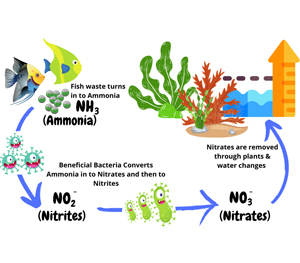 When discussing the process of the nitrate cycle fish tank, we are essentially referring to the nitrogen cycle. This natural phenomenon of the aquarium water cycle plays a crucial role in safeguarding your aquatic environment.
When discussing the process of the nitrate cycle fish tank, we are essentially referring to the nitrogen cycle. This natural phenomenon of the aquarium water cycle plays a crucial role in safeguarding your aquatic environment.
Therefore, when establishing a new fish tank for your finned fish, it is necessary to initiate an ammonia cycle fish tank. Picture it as extending an invitation to beneficial bacteria for this event. These microorganisms serve as diligent caretakers by managing and decomposing fish waste, which can contain high levels of ammonia.
However, here’s the fascinating part: these bacteria convert ammonia into nitrites and subsequently nitrates, which possess significantly lower toxicity. Through this entire procedure of the aquarium water cycle, your tank becomes well-prepared for welcoming its inhabitants.
Why is the Freshwater Aquarium Cycle Important?
Well, now you must be wondering why the freshwater aquarium cycle is important. Here is why;
The process-nitrate cycle fish tank is of utmost importance as it ensures the establishment of a safe and secure environment for your fish. Before introducing your finned fish, it is essential to allow the beneficial nitrifying bacteria to colonize the filters in your tank.
These bacteria play a crucial role in converting harmful ammonia from fish waste into a more benign substance.
Now, here’s what you need to know – if you hastily add too many fish at once, these bacteria may struggle to keep up with the increased biological load.
Even if you have thoroughly researched and understood the concept of nitrate cycle fish tank, gradually introducing fish one by one is strongly recommended.
On the other hand, skipping this crucial step in the aquarium water cycle can lead to problems such as “New Tank Syndrome,” which can be detrimental, particularly for delicate species of fish. To safeguard the health and well-being of your aquatic friends, engaging in proper ammonia cycle fish tank practices serves as a better strategy.
How Long Does it Take to Cycle a Fish Tank?
The duration of the nitrate cycle fish tank process varies and cannot be determined definitively.
Typically, it spans anywhere from a few weeks to several months. Various factors come into play, such as regular water testing and other considerations like the size of your tank, pH levels, and temperature conditions.
As a general guideline for most ammonia cycle fish tanks, expect this process to take approximately four to eight weeks. However, please note that these estimates are subject to alteration based on individual circumstances.
For optimal results, it is advised to maintain a pH range of 7.0 to 7.8 and water temperature between 83°F to 87°F. Regular testing of the water should be conducted every few days. Over the time of the freshwater aquarium cycle, you will notice ammonia levels decrease, nitrites increase, and eventually, nitrates will appear.
The completion of the nitrate cycle fish tank can be determined once ammonia and nitrite levels reach zero while nitrates are present in the tank.
Aquarium Water Cycling: Step By Step Guide
There are a few ways to ammonia cycle a fish tank, when you set it up: with fish, without fish, or with plants. It’s ideal to cycle without fish if you’re new to this. Fish in the tank throughout this process run the risk of being hurt because the water contains too much ammonia, which is bad for them.
On the flip side, using plants can be challenging and may frustrate the nitrate cycle fish tank process. Aquarium water cycling with no fish is therefore a safer and simpler option for beginners.
Things You Need;
- Quality water filter (ideally reverse osmosis)
- Fish food
- Aquarium test kit
- Essential aquarium components (such as pumps, filters, and substrate)
Freshwater Aquarium Cycling without Fish
Step 1: Setting Up the Tank
Ensure that all of your tank’s components, including the pumps, filters, substrate, and more, are correctly installed and working before beginning the process of the nitrate cycle fish tank. When fish are introduced, these elements support the growth of advantageous bacteria on their surfaces, which is essential for the nitrogen cycle.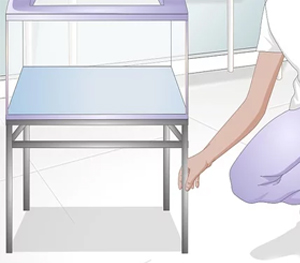
Step 2: Testing the pH of the Water
For the ammonia cycle fish tank to function effectively, the pH of the water must be kept between 7.0 and 7.8. The cycle can be disturbed by extreme pH values. You can check the pH of the water using strips or a kit. Your fish will live in a stable and healthy environment thanks to routine monitoring and adjustments.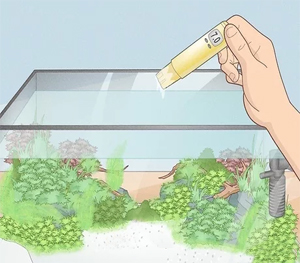
Step 3: Adding Ammonia
To initiate the nitrogen cycle, ammonia can be introduced into the tank. This can be accomplished by incorporating fish food, which will decompose and produce ammonia. This process serves as a catalyst in the ammonia cycle fish tank.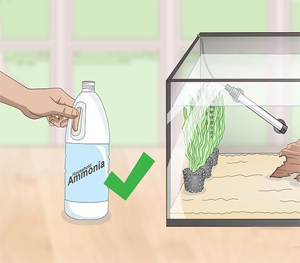
Step 4: Monitoring Ammonia Levels
After the decomposition of organic matter, it is necessary to monitor the levels of ammonia in the aquarium water cycle. Ideally, aim for a concentration of approximately 3 ppm. If it drops below this level, add more food; if it exceeds 5 ppm, conduct a partial water change. Utilize an aquarium test kit for precise measurements and ensure that ammonia remains at an appropriate level throughout this stage.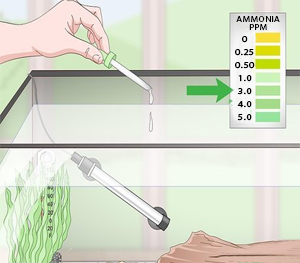
Step 5: Checking Nitrite Levels
After a week of having proper ammonia levels, nitrite levels ought to be detectable. Continue keeping an eye on ammonia and pH if nitrites have not yet appeared. When nitrites do appear, they will rise quickly, so keep ammonia levels high to support this phase. For precise measurements, use a test kit for the ammonia cycle fish tank.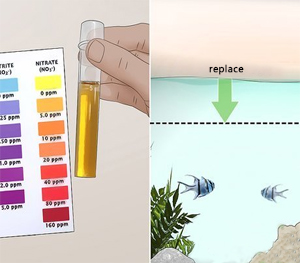
Step 6: Measuring Nitrate Levels
Nitrite levels fall and nitrate levels rise, indicating the presence of beneficial bacteria. Every few days, add a tiny quantity of fish food to ensure the growth of these bacteria. Nitrate levels stay the same while ammonia and nitrite levels decrease. This indicates that the nitrate cycle fish tank process is about to be finished.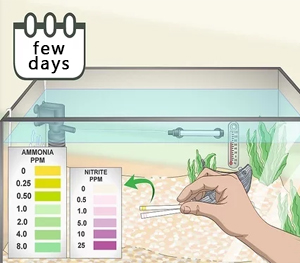
Step 7: Adding Fish to the Tank
After completing the process of the aquarium water cycle, add fish gradually to avoid overwhelming the bacterial colonies. Start off with one or two fish, and as the tank stabilizes, add more.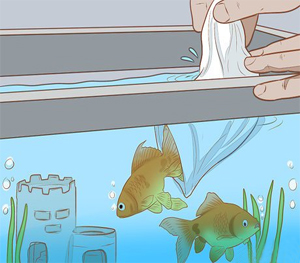
Freshwater Aquarium Cycling with Fish
Step 1: Tank Component Setup
It’s important to have all of the equipment, including filters, pumps, heaters, and bubblers, installed correctly and in good working order before adding fish to the ammonia cycle fish tank.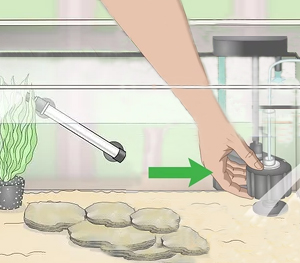
Step 2: Adding Hardy Fish
To start the freshwater aquarium cycle, introduce no more than three hardy fish. Hardy species aren’t as sensitive to contaminants and ammonia, preventing cycling-related spikes that could be harmful.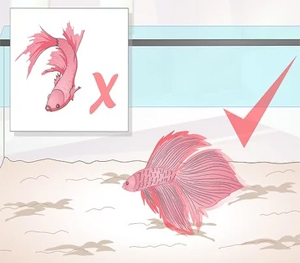
Step 3: Limited Feeding
It’s best to feed your fish sparingly during the cycling period. The production of ammonia and excessive waste can result from overfeeding. Once the nitrate cycle fish tank is established, gradually resume regular feeding.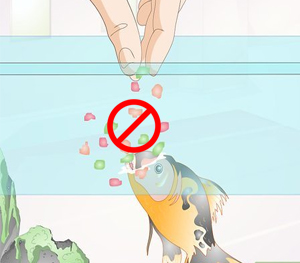
Step 4: Change Water Regularly
It is recommended to perform partial water changes twice a week, replacing around 10-20% of the water each time. By doing so, you can ensure a healthier and more efficient freshwater aquarium cycle.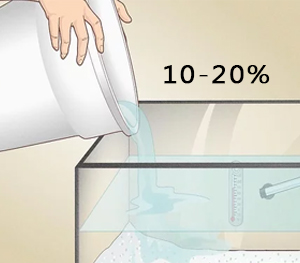
Step 5: Monitor Nitrate Levels
To ensure the safety of your fish, it is important to constantly monitor levels of ammonia, nitrite, and nitrate while performing the freshwater aquarium cycle. Once nitrate levels stabilize and both ammonia and nitrite become undetectable, you can safely introduce more fish into your tank.
Aquarium Water Cycle with Plants
In comparison to other methods, nitrate cycle fish tank with plants carries risks like plant problems and the growth of algae that can disrupt the cycle. Even though fishless cycling is kinder than fish-in cycling, it is still the preferred option for many.
If you decide to go the aquarium water cycle plant route, just be certain to have nitrogen-containing fertilizers available.
- Check that heaters, pumps, filters, and other components are installed correctly.
- Before adding hardy plants, like water column feeders, disinfect the plants.
- Ensure adequate lighting. For photosynthesis, plants require 10 to 12 hours of light per day.
- For water column feeders, use liquid fertilizer, and for root plants, use root tabs.
- Perform Regular Water Changes in the tank. To stop the growth of algae, change 30% of the water every week in the aquarium water cycle.
- Keep an eye out for new growth because it indicates that the cycle is almost complete. Some algae are acceptable.
- Monitor the levels of ammonia, nitrite, and nitrate in the water. Your tank becomes an ammonia cycle fish tank when ammonia disappears after 24 hours and nitrites and nitrates are both present.
Conclusion
In conclusion, aquarium water cycling is an essential task for responsible fishkeeping. By replicating nature’s processes, it allows you to create a comfortable environment for your fish. Neglecting this step is not advisable when establishing your tank.
With the information provided in this discussion, you now possess the necessary knowledge to perform the ammonia cycle fish tank process and create a thriving habitat for your fish. Your extra efforts will be greatly appreciated by your fish!



